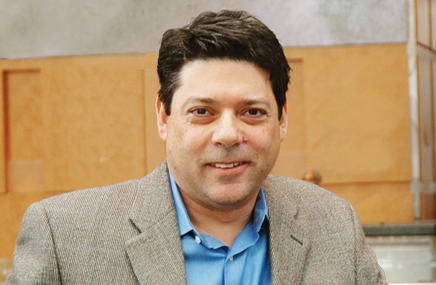HLG Health Communications got its new name in April 2011 after having been known as the Hal Lewis Group for many years. The change didn’t come as a surprise to many, since the firm had long been known to most people in the industry by its initials. Adding “Health Communications” to the tag served to clarify its central mission. So while little of the old company’s identity remains, HLG spent the last 12 months staking out a distinct place for itself in the health marketing landscape.
Most crucial to the rebranding was a shift in the firm’s business model. HLG arrived at “medical marketing for the modern world” as a tagline and adopted “delight your customers with speed and quality” as a brand mantra. To that end, HLG has prioritized flexibility in its staffing and client service.
“The old model—dedicated agency teams where people are focused exclusively on one product or account—is a thing of the past,” says HLG president David Winigrad. “Our vision is to create an agency that is positioned, structured and run to accommodate what clients want and need today.”

What this means: At any moment, HLG’s head count varies between 20 and 30 staffers, depending on client demand. “What they want is flexibility and, frankly, cost-effectiveness from their agencies,” Winigrad continues. “We’re rarely getting pushback when it comes to the costs we put into proposals. That confirms to me that we’ve found a way to control our costs internally and provide a competitive product to clients.”
Has it paid off? Winigrad reports that switching over to the new model has “significantly” increased HLG’s revenue. Internally, staffers have responded just as positively. “There aren’t any narrowly defined job descriptions anymore,” he notes.
HLG’s client roster bears out that last statement. Additions during the last 12 months include GE Healthcare, for Alzheimer’s drug flutemetamol; the GE Healthcare-owned Clarient, for a cancerous tissue analysis platform; Paradigm Spine, for corporate/branding work and the U.S. introduction of its Coflex implant; AstraZeneca, for project work on cholesterol drug Crestor; and Jazz Pharmaceuticals, for schizophrenia drug OraCloz.
What pleases Winigrad the most about the slate of new assignments is its diversity. While that requires finding staffers with a broad range of skills and scientific knowledge, it also means that those staffers won’t get bored anytime soon. “If you’re an intellectually curious person, this is an ideal situation,” he says. To fill in some of the remaining capability gaps, HLG has partnered with highly regarded U.K.-based digital healthcare shop CreativeLynx.
As for the one HLG assignment that went away—Santyl, Healthpoint Biotherapeutics’ ointment for ulcers and burns—Winigrad plays the blessing-in-disguise card: “I never see business losses as anything other than an opportunity to learn from the experience. Frankly, they energize us to explore and reach out for new experiences.”
In the months ahead, Winigrad hopes first and foremost for opportunities that excite him and the HLG team, such as the recent work done on behalf of BD. “We took their pre-filled syringe products and created a series of visual stories around them,” he says. “The work stepped out a little bit from the conservative nature of this business. We were really proud of it.”
From the July 01, 2012 Issue of MM+M - Medical Marketing and Media







